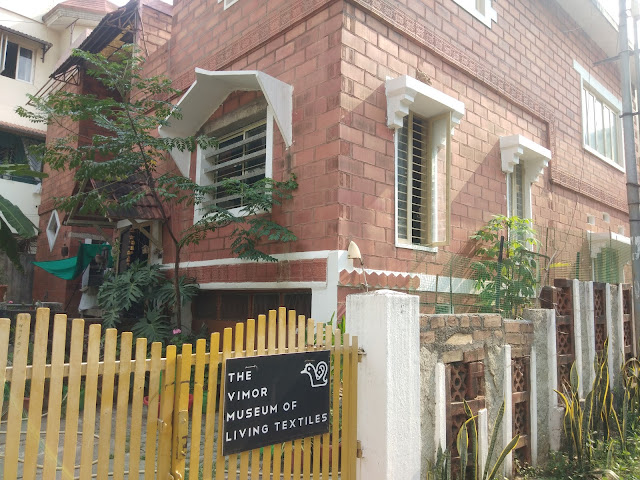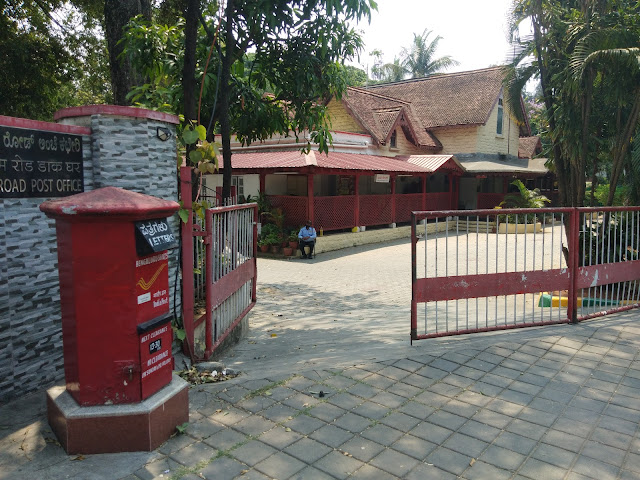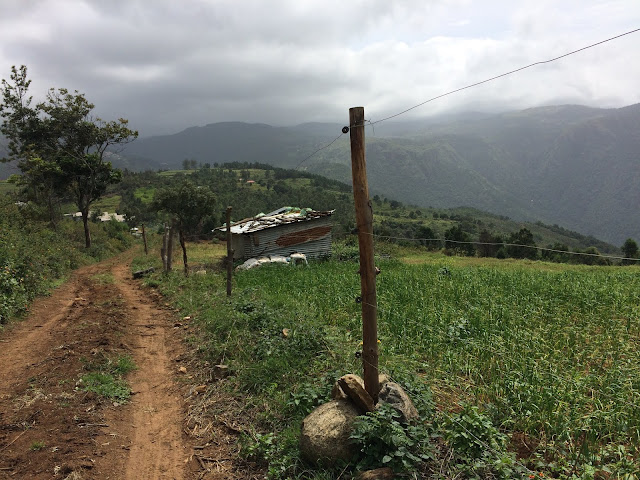Vimor Museum of Living Textiles
Nestled in the quaint locality of Austin town, Bangalore is an interesting museum of textiles which will take you into the world of weaving and varieties of authentic traditional hand-woven sarees.
Vimor was started in 1974 by Mrs. Chimy Nanjappa (Pavithra's mother) and Mrs. Pavithra Muddaya to revive and promote traditional handloom sarees and to create a sustainable livelihood for the weavers. In fact, Vimor has supported weavers with financial aid to empower them as master weavers or entrepreneurs. Mrs Chimy Nanjappa was the first ever manager of Cauvery Emporium located on M.G.Road, Bangalore.
This museum is located on the first floor of Pavithra Muddaya’s house who is the co-founder of Vimor Handloom Foundation. Vimor stores where you can buy these sarees is just 5 minutes from this museum and this has been visited by famous celebrities from all over India.
We were welcomed by Vipra who is the daughter of Pavithra Muddaya,
and she was super excited to answer the questions raised by us around the saree
weaving process, fabrics used and all other aspects that goes into saree making.
Entry Fee for this museum is Rs. 250.
In this museum, you will find all kinds of traditional sarees
right from the Paithani Saree to Kodava style to Nagaland style to car-by-plane
saree which features intricately woven cars, airplanes, gramophones. We also
saw a fabric where in the alphabets A to Z were woven both in upper case and lower
case.
 |
| The fabric at the bottom of this picture was woven with alphabets |
In fact, she said that some sarees kept in this museum are
donated by her grandmother. Both Chimy Nanjappa and Pavithra Muddaya have
collected rare and extraordinary sarees from all over India. So if you visit
this museum may be after 3 months, you will find another collection of
traditional sarees exhibited here.
The museum is spread across 3 rooms. The main room consists of the weaving machines, sarees and some brief about Vimor and its founders. In the other 2 rooms, you will find exhibits of traditional sarees. You will also find some towels and bed-sheets hand-woven by Weavers during the pandemic. You can buy them at the museum itself.
When asked how they arrived at this name “Vimor” there is an
interesting story behind this as well. It so happened that her grandmother Mrs.
Chimy Nanjappa was invited for a guest lecture in one of the Southeast Asian countries
and there she met a lady named “Vimor”. Out of curiosity she asked her what it means,
and she said “Pure”. That’s when this name stuck in her mind, and she thought
this would be the apt name to the kind of work they have been doing around authentic traditional hand-woven sarees.
In this museum you will also find write-up about each saree - right from saree's origin to stories around weaving and
all the required information that went into the specific saree making.
Also, if you are a textile enthusiast and are interested to learn weaving process, you can even enroll for the classes that are conducted here by expert weavers where in you will be taught spinning, weaving, dyeing and embroidery.
So if you have a traditional saree gifted by your grandmother and you want a recreated version of it, you know where to get this done now 😊. This place is a must visit for saree enthusiasts and especially fashion design students.
Vimor Handloom Foundation Contact# - +919886820082
Email id - vimorhandloomfoundation@gmail.com












Comments
Post a Comment